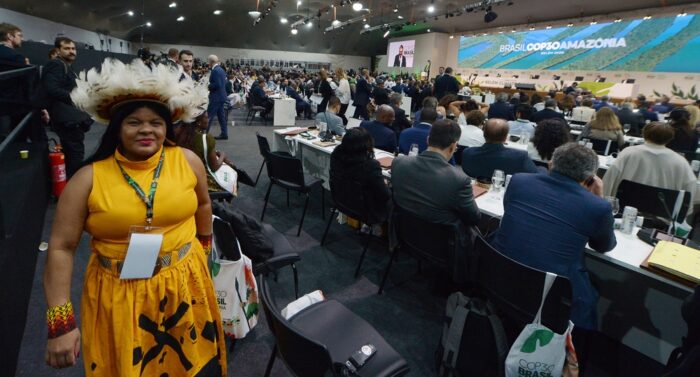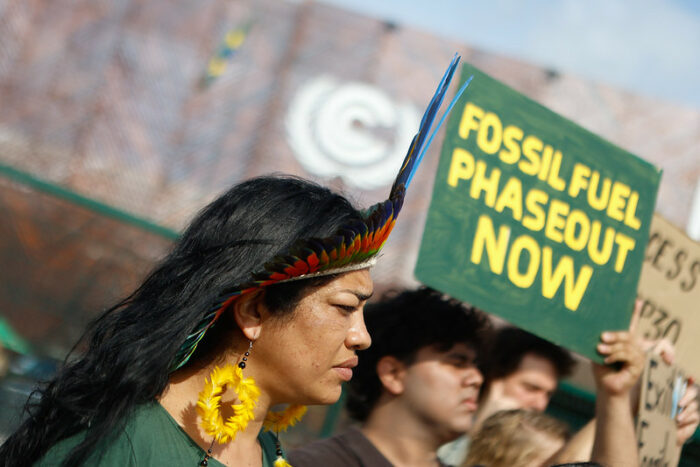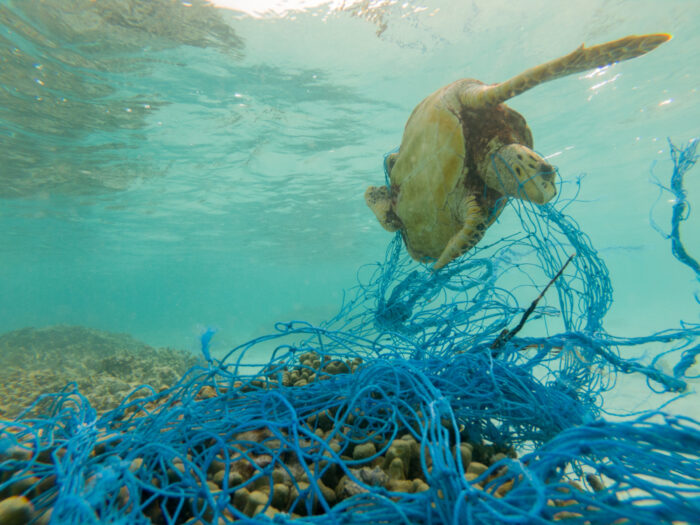The Progressive Post
Our food production destroys biodiversity

The goals and targets agreed upon in a new ambitious international framework to restore global biodiversity will only be met if countries radically transform their agriculture and food production systems. The EU needs to be a leader in bringing food production and consumption back within planetary boundaries.
The numbers are staggering: since 1900, an estimated 75 per cent of global plant genetic diversity has been lost. This is mainly due to the widespread uptake of green revolution agricultural production models which is detrimental to biodiversity. The large-scale application of artificial fertilisers and pesticides and the neglect of farmers’ landraces (local and indigenous seeds) as they turned to grow genetically homogenous commodity crops, have been among the main drivers of the decline of genetic diversity. The overall decline of species and destruction of ecosystems were first brought to our attention with the establishment of the Convention on Biological Diversity (CBD) in 1992, during the UN’s first Earth Summit in Rio de Janeiro. Unfortunately, the international community hasn’t kept its promise of effectively protecting Earth’s natural resources. Last December, countries adopted a new set of ambitious international goals for biodiversity at the 15th Conference of Parties (COP15) in Montreal. In this new Global Biodiversity Framework (GBF), 188 countries agreed to scale up their efforts to protect nature and to halt and reverse biodiversity loss by the end of this decade. It is yet to be seen if this time they keep their promise.
The new framework consists of four ambitious goals and 23 targets, like protecting 30 per cent of the world’s land areas and 30 per cent of oceans by 2030. Also, an agreement for rich countries to mobilise $30bn for poorer countries by 2030 made it to the final text. However, questions still need to be answered on whether the agreements that have been signed will be sufficiently transformative. None of the components of the Framework – nor of the 1992 Convention for that matter – are legally binding. It is unclear, for example, how the ‘restoration and enhancement of ecosystem function through nature-based solutions and ecosystem-based approaches’ (target 11) is meant to become a reality, as this will be largely left to countries to determine.
What has become clear, however, is that countries will need to reform their economies substantially to respect the framework. Most of the 23 targets agreed in the framework are directly or indirectly relevant to agriculture, and, therefore, one area to look at in particular is food production. Much of the global genetic diversity has been lost over the past century due to agricultural developments and how food systems currently function. The globalised industrial food system is characterised by high market concentration. Only a small number of corporate players dominate the global seed, fertiliser and pesticide sectors, global food trade, food processing, and grocery retail markets. This has spurred the decline of varieties and breeds used by farmers. It has also caused the rising global demand for animal-based food like meat and dairy and tropical products like coffee, palm oil, cocoa and sugar, which has been a main driver of the large-scale destruction of ecosystems, in the Amazon rainforest and the savannahs and wetlands around the globe.
We need to transform the destructive tendencies of our current food production systems into a force for good, and halt food systems-induced biodiversity loss. A first step for governments worldwide would be to translate their commitments in the new Global Biodiversity Framework into concrete national plans of action. In the years ahead, they will need to concretise their commitments in the so-called National Biodiversity Strategies and Action Plans. is the reform of food systems must be a key focus in these plans. Here are a few ideas on how to make food systems work better for biodiversity.
Across the board, countries need to adopt and implement agricultural development and food policies that strengthen and promote, rather than break down genetic diversity.
In many cases, this means that they need to move away from high-input agriculture, reducing dependencies on chemical fertilisers and pesticides and stop focusing on only a small number of commercially oriented crops. While there’s no one-size-fits-all approach, the targets of the European Farm to Fork strategy, including the goals to reduce by 50 per cent the use and risk of chemical pesticides by 2030, and to boost organic production to reach 25 per cent of the EU’s agricultural land use by 2030, are a promising way forward. The EU should remain coherent, and respect a similar ambition when it operates globally, through its international trade, agriculture, and development policies.
Countries in the Global South, which in the current system function predominantly as peripheries cheaply producing a limited number of (genetically homogenous) crops for global commodity markets, must be supported in developing domestic and regional food markets. This means scaling up investments in the domestic agricultural sector, while protecting home markets against cheap imports from abroad. This would require a significant shift in international and bilateral trade regimes, often negotiated to benefit and protect farmers in rich countries. International trade rules must be reshaped, with greater space for poorer countries to adjust their levels of food imports and exports and to invest in domestic food production.
Furthermore, many countries in the Global South have a great diversity of different indigenous crops and varieties grown on farmers’ fields and often traded in informal, local food markets. Fair prices paid to the producers who grow and conserve local plant varieties and cattle breeds are a necessary condition to maintain and strengthen an agrobiodiverse system. One related way to spur the growth of biodiversity-friendly food systems would be to agroecological production principles and practices. Intercropping and the use of cover crops enhance soil health, and by optimising biological synergies, agroecological practices like crop-livestock integration enhance ecological functions, leading to greater resource-use efficiency and resilience.
A last crucial element in the struggle for biodiverse food production systems – and for agrarian justice – is the recognition and inclusion of indigenous knowledge into decision-making processes and research institutions. Farmers have in-depth knowledge and expertise in improving, selecting, and multiplying native and indigenous plant species that are also key to climate resilience. Cooperation between farmers, breeders and knowledge institutions on developing and enhancing farmers’ seed varieties is a great example of how local knowledge on agrobiodiversity can be utilised, strengthened and allocated for both strengthening local food security, as well as the conservation of species and the protection of ecosystems at large.
Much remains to be done to halt and reverse global biodiversity loss. The new Global Biodiversity Framework gives precious guidance on how to avoid further eating into our planet. All countries need to rethink and radically adjust their food production systems for the goals to be achieved, and the EU and countries in the Global North must be bold in their responsibility in this area.




